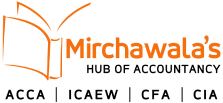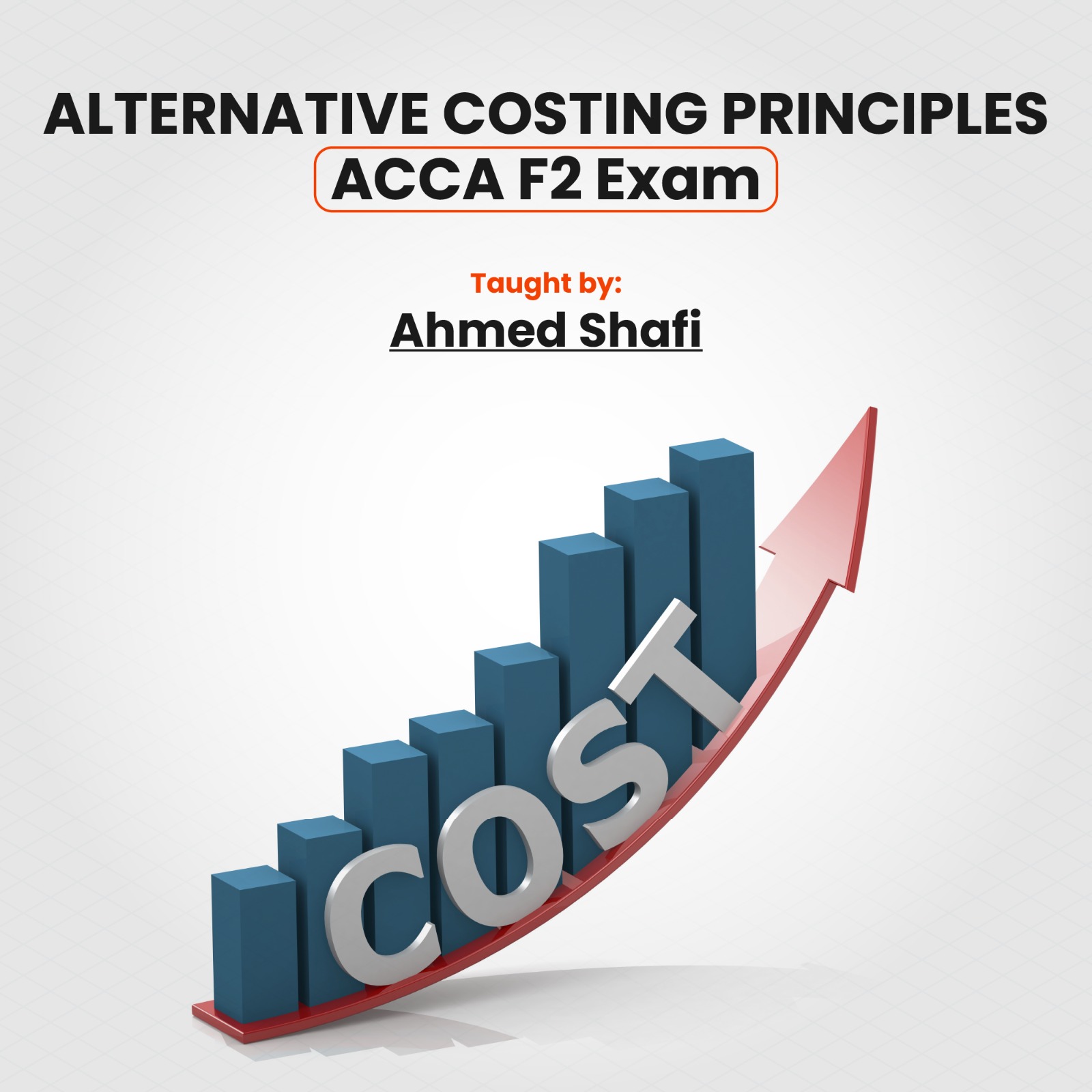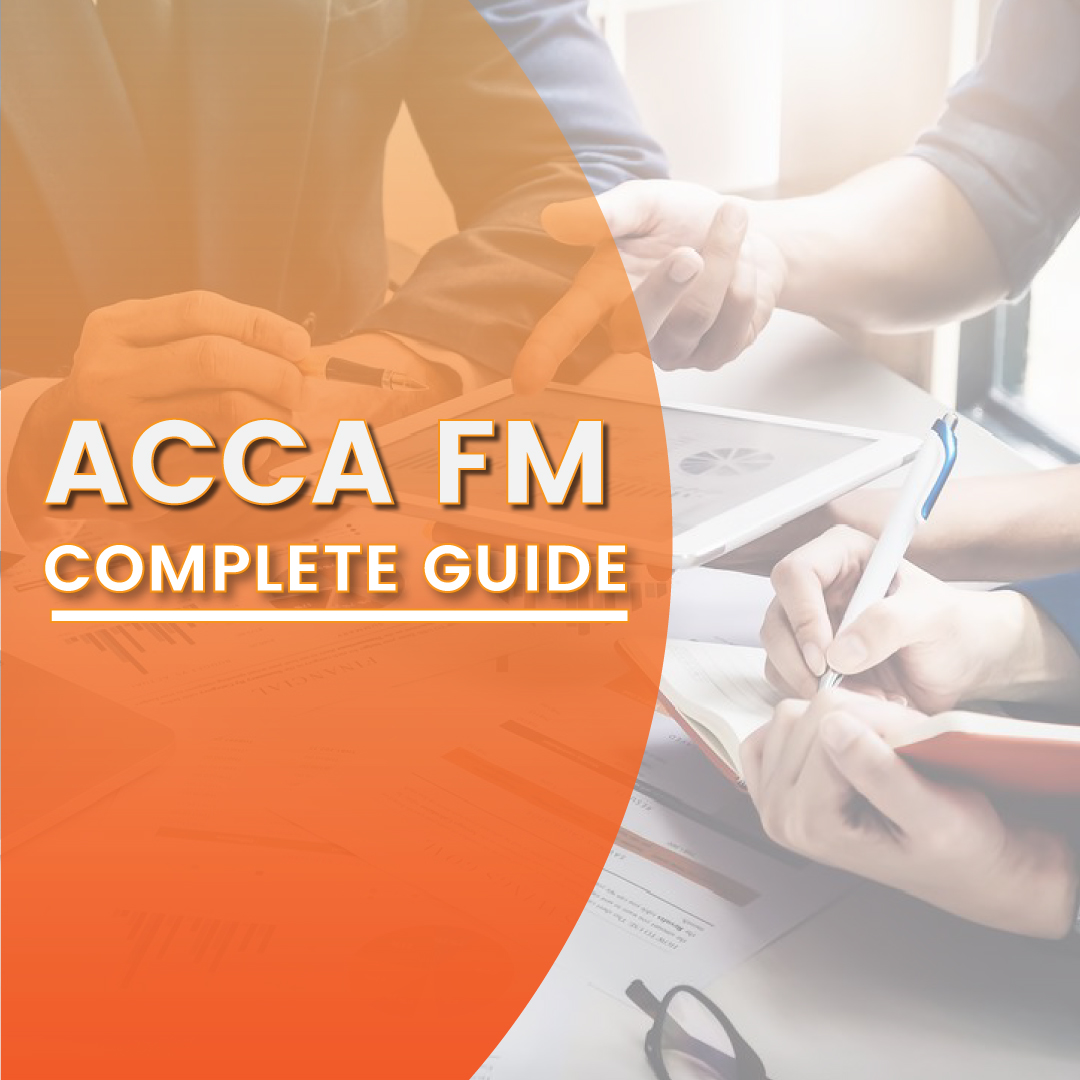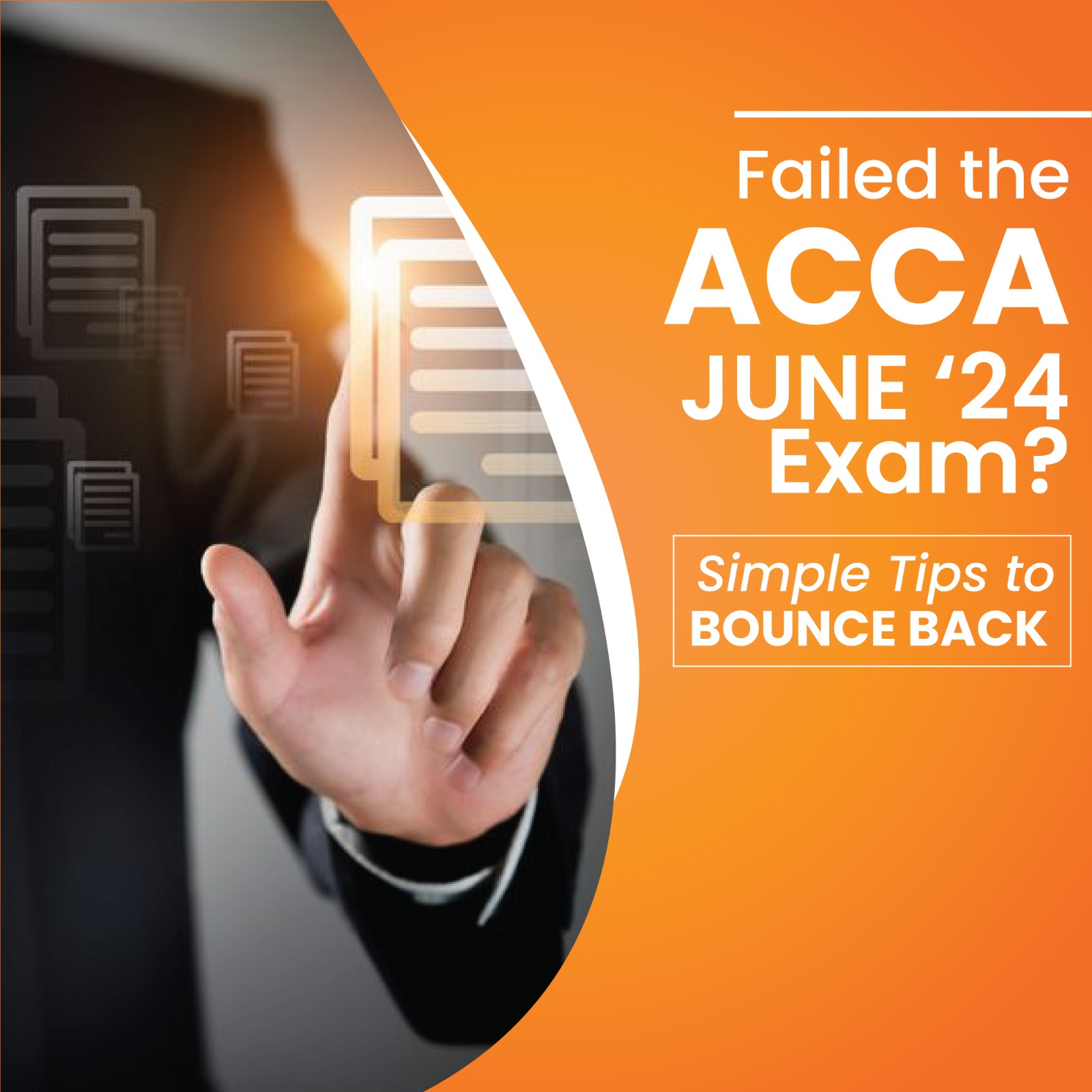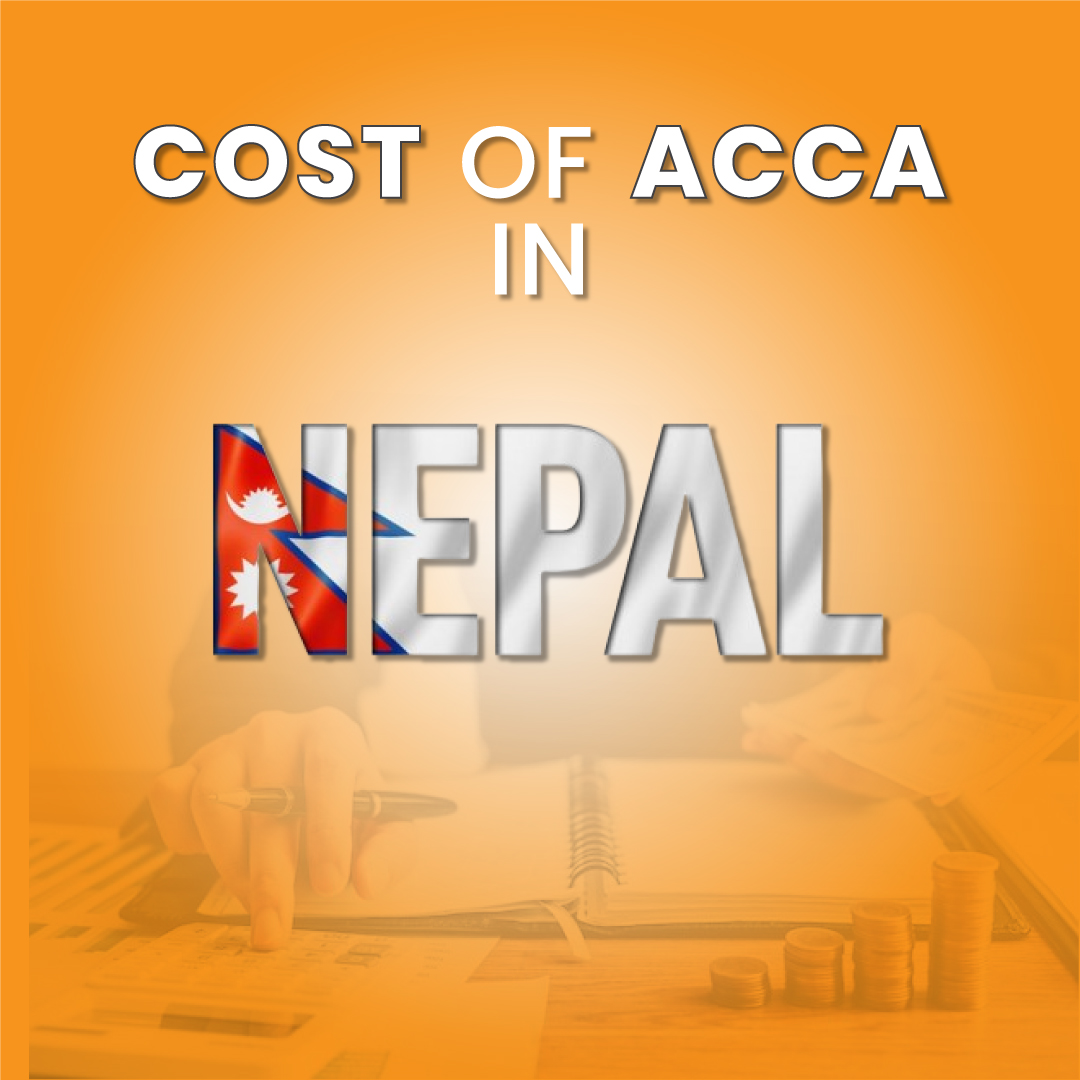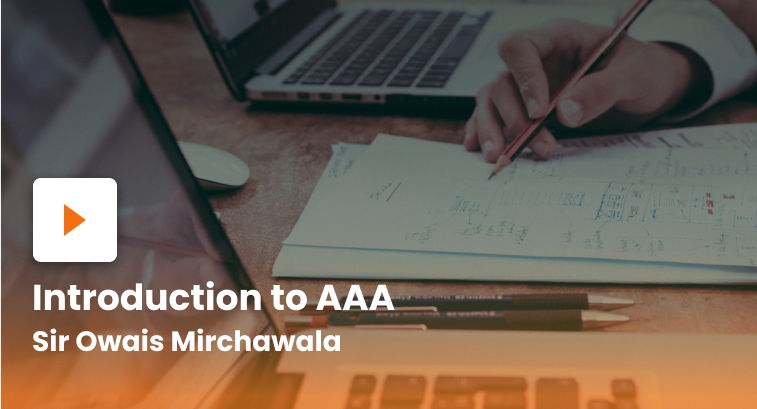“ACCA F2 Exam: Exploring Alternative Costing Principles”
In the world of accounting and finance, change is constant. Traditional costing strategies have long been the cornerstone of managing finances, however, instances are changing. We’re now in a technology where progressive processes to price administration are taking the core stage. This article is going to discuss ACCA F2’s Alternative Costing Principles, So, buckle up and be part of us on this ride to find out unconventional techniques that venture the norm and release the attainability of modern-day accounting.

The Four Techniques
- Life Cycle Costing
- Target Costing
- Activity-Based Costing (ABC)
- Total Quality Management (TQM)
Life Cycle Costing
Life Cycle Costing, at its core, is designed to take a comprehensive view of costs over the entire life of a project or product. It considers not just the initial investment but also the costs of maintenance, operation, and eventual disposal. Life Cycle Costing is all about profit reporting, it tells us to report profits according to the products and their lives, Unlike traditional accounting methods that often focus on short-term profitability, Life Cycle Costing takes into account both the initial costs and the future expenses and revenues associated with the entity.
It also tells us about the 5 stages of a product’s life, they are;
- Development Stage
- Introduction Stage
- Growth Stage
- Maturity Stage
- Decline Stage
The development stage talks about when the product is in the process of making, so when this process goes on, it takes up expenses, costs, energy, and time but at this stage, it doesn’t provide us with any profit or revenue as a result only incurring costs.
- Introduction Stage
This is the stage where the product is launched and its release and promotion require heavy advertisement and marketing, this stage also takes up huge costs because promotion is not cheap these days, so this stage also ends up only taking costs and provides very low revenue
- Growth Stage
This is the stage after the intro stage, due to heavy advertisements and promotion, the demand for the product shoots up in this growth stage and the profit and revenues increase as a result decreasing the unit costs and also the fixed costs spread up on high volumes, but one drawback in this stage is that it brings new competitions into the market.
- Maturity Stage
This stage is where the growth slows down after giving out heavy profits, now the competition starts to kick in on a bigger level, so the sales decrease as a result of slowing down profits.
- Decline Stage
This is the final stage of the cycle costing, this is where the products become obsolete, and go out of trend as some new products come in and replace them, this is the stage where the lifecycle of a product ends, and the companies start to make a new product to start the lifecycle again.
The discussion about the Life Cycle Costing ends here, now we will talk about the next one, which is, Target Costing.
Target Costing
Target costing is a dynamic cost management/administration method employed especially in product-oriented/manufacturing industries. It includes placing a predetermined fee goal based totally on market expectations and then reverse-engineering the product to meet that goal whilst making sure of profitability.
What Is The Target Cost?
Target Cost is a cost estimate that is derived by deducting the desired Profit Margin from a competitive market price. This statement above is important to learn and understand as you will see MCQs related to it in your ACCA F2 exam, this whole topic is related to F2/Management Accounting.
Target Cost Formula= Selling Price – Profit Margin
The Process Of Target Costing
Market-Based Pricing:
Determine the target price/Selling Price for the product based on market analysis, considering factors like customer demand and competitors’ pricing.
Determine Desired Profit Margin:
Establish the desired profit margin by subtracting the desired profit from the target price/Selling Price. This margin represents the allowable cost for the product.
Cost Estimation:
Estimate the costs associated with manufacturing and delivering the product. This will give you an overview of all the costs that could be incurred in the product’s life.
Identify Cost Gap:
Calculate the cost gap by subtracting the estimated costs from the allowable cost (target cost).
Cost Reduction and Continuous Improvement:
Implement cost reduction initiatives and process improvements to bridge the cost gap but with some conditions, they are written below.
How To Close The Gap And The Conditions to Follow
To close the gap, there are some conditions that need to be followed in order to book a good profit and keep the long-term growth stable. They are;
- Companies cannot increase their selling price or their target price as this would result in a loss of sales in the long term due to customers reacting to the high prices and taking up substitute products.
- Companies cannot reduce their Profit Margins, as this would result in losses in the long term because the company would be producing at the same costs but would be selling at lower margins or profits.
- Companies cannot decrease or bring down the quality of the products because this will also lead to losing a huge level of their customer base and their sales would decrease in the long term.
All these are the conditions, the ways to close the gap are just below;
Closing the cost gap in target costing involves a strategic approach that considers several key factors. Here’s how to address the cost gap through substitute materials, economies of scale, automation, and reducing elements of the supply chain:
- Substitute Materials:
- Identify substitute raw materials or factors that can keep or enhance the product whilst lowering costs.
- Assess the feasibility and overall performance implications of the use of these substitutes.
- Consider elements like material availability, durability, and environmental impact when making material substitution decisions.
- Economies of Scale:
- Increase production volume to take advantage of economies of scale, which can lower the per-unit cost of production.
- Negotiate favorable terms with suppliers for bulk purchases and leverage production efficiency gains.
- Collaborate with suppliers and manufacturing partners to streamline operations and reduce costs as volume increases.
- Automation:
- Invest in automation technologies to enhance production efficiency and reduce labor costs.
- Automate repetitive and labor-intensive tasks to improve accuracy and speed of production.
- Continuously monitor and optimize automated processes to maintain cost efficiencies and product quality.
- Reduce Elements of the Supply Chain:
- Streamline the supply chain by eliminating unnecessary intermediaries or processes.
- Consolidate suppliers and distribution channels to reduce transportation and handling costs.
- Implement just-in-time inventory management to minimize holding costs and reduce waste.
- Cross-Functional Collaboration:
- Foster collaboration among cross-functional teams, including product design, engineering, production, and procurement.
- Encourage open communication to identify cost-saving opportunities and align product development with cost targets.
- Promote a culture of continuous improvement and innovation within the organization.
Now we begin with the third technique which is Activity Based Costing, this is one of the most important and the most helpful techniques.
Activity Based Costing
It is a modern technique that is globally used to treat overheads. In Activity-Based Costing (ABC), overhead costs are allotted to specific activities and products based totally on their true usage. This strategy ensures a greater unique distribution of overhead expenses, supporting businesses to recognize the genuine price of producing every product or delivering every service.
Absorption Costing
An old technique to treat Overheads is Absorption Costing, there are 4 steps to it and they are;
Step 1:
Find the total Overhead cost by adding all Overheads.
Step 2:
Find total Machine Hours or Total Labour Hours.
Step 3:
Find an Overhead Absorption Rate-OAR = Total Overheads / Total Machine Hours OR Total Labour Hours.
Step 4:
Charge Overheads to products through Overhead Absorption Rate.
Activity Based Costing (ABC)
The new technique to treat Overheads is through Activity Based Costing (ABC), it also has 4 steps to it, which are written down below;
Step 1:
First, we will have to make cost pools.
Step 2:
Then we need to find cost drivers, cost drivers are activities that trigger costs in a business.
Step 3:
Then we have to find the rate for each Cost Pool;
Rate = Cost Pool’s Cost / Cost Driver
Step 4:
Now in this last step, we have to charge each pool to products, separately.
As the three techniques are now done, we will proceed to the fourth and final technique which is Total Quality Management.
Total Quality Management
Total Quality Management (TQM) is a complete method to enhance product and provider quality, as well as organizational processes. It encompasses dedication to exceptional quality management, non-stop improvement, and consumer focus, all with the goal of improving customer/purchaser satisfaction.
In the context of Total Quality Management, Quality means;
- Getting it right the first time.
- Continuous Improvement and enhancement.
It says that the workers need to be trained and should be given the knowledge that bad quality has costs that affect businesses, sometimes even on a larger scale, and that good quality generates savings for the business.
Types Of Costs Highlighted By The Total Quality Management Technique
- Prevention Costs
- Appraisal/Inspection Costs
- Internal Failure Costs
- External Failure Costs
Prevention Costs:
- Costs incurred to prevent defects or issues in products or processes.
- Includes expenses for employee training, process documentation, quality control procedures, supplier quality management, and quality planning.
Appraisal/Inspection Costs:
- Costs associated with activities that assess the quality of products or processes.
- Encompasses expenses for inspection, testing, quality audits, and process evaluations.
Internal Failure Costs:
- Costs resulting from defects or issues identified before delivery to the customer.
- Include expenses for rework, scrap, retesting, and machine breakdowns due to internal issues.
- Internal failure costs focus on addressing problems that occur within the organization, preventing them from reaching the customer.
External Failure Costs:
- Costs arising from defects or issues identified after the product has reached the customer.
- Encompass expenses for warranty claims, customer returns, product recalls, and reputation damage control.
Ken Garrett explains target costing and lifecycle costing, and gives examples as to how and when you would use these costing techniques-ACCA Global
Conclusion
In these times, all these techniques are being used widely to treat costs and other issues, this article by Mirchawala’s Hub Of Accountancy was for you to learn about this chapter of Alternative Costing Principles because it is a part of the syllabus of the F2/Management Accounting exam of ACCA, this article holds the complete details to this chapter and this would be a real help for your exam, contact us for more information on ACCA and stay tuned for more amazing articles like this.
Frequently Asked Questions (FAQs)
Q1. What are the 4 modern alternative techniques for Costing?
- Life Cycle Costing
- Target Costing
- Activity-Based Costing (ABC)
- Total Quality Management (TQM)
Q2. How many stages are there in a product’s life? Name them
There are 5 stages in a product’s life and they are;
- Development Stage
- Introduction Stage
- Growth Stage
- Maturity Stage
- Decline Stage
Q3. What is the name of the modern technique that is used to treat Overheads?
The name of the technique that is used to treat Overheads is, Activity Based Costing (ABC).
Q4. What are the restrictions of closing cost Gap in Target costing?
- The company can’t reduce it’s selling price
- The company can’t lower it’s required profit margin
- Cost reduction which would affect the performance of the product can’t be made.
Q5. Which costing principle is used to inspect the cost and profit of a product
Lifecycle costing is used to identify the costs and revenue generated by a product throughout it’s life.
-Written by Agha Zulfiqar Haider bright student of Mirchawala’s Hub Of Accountancy
